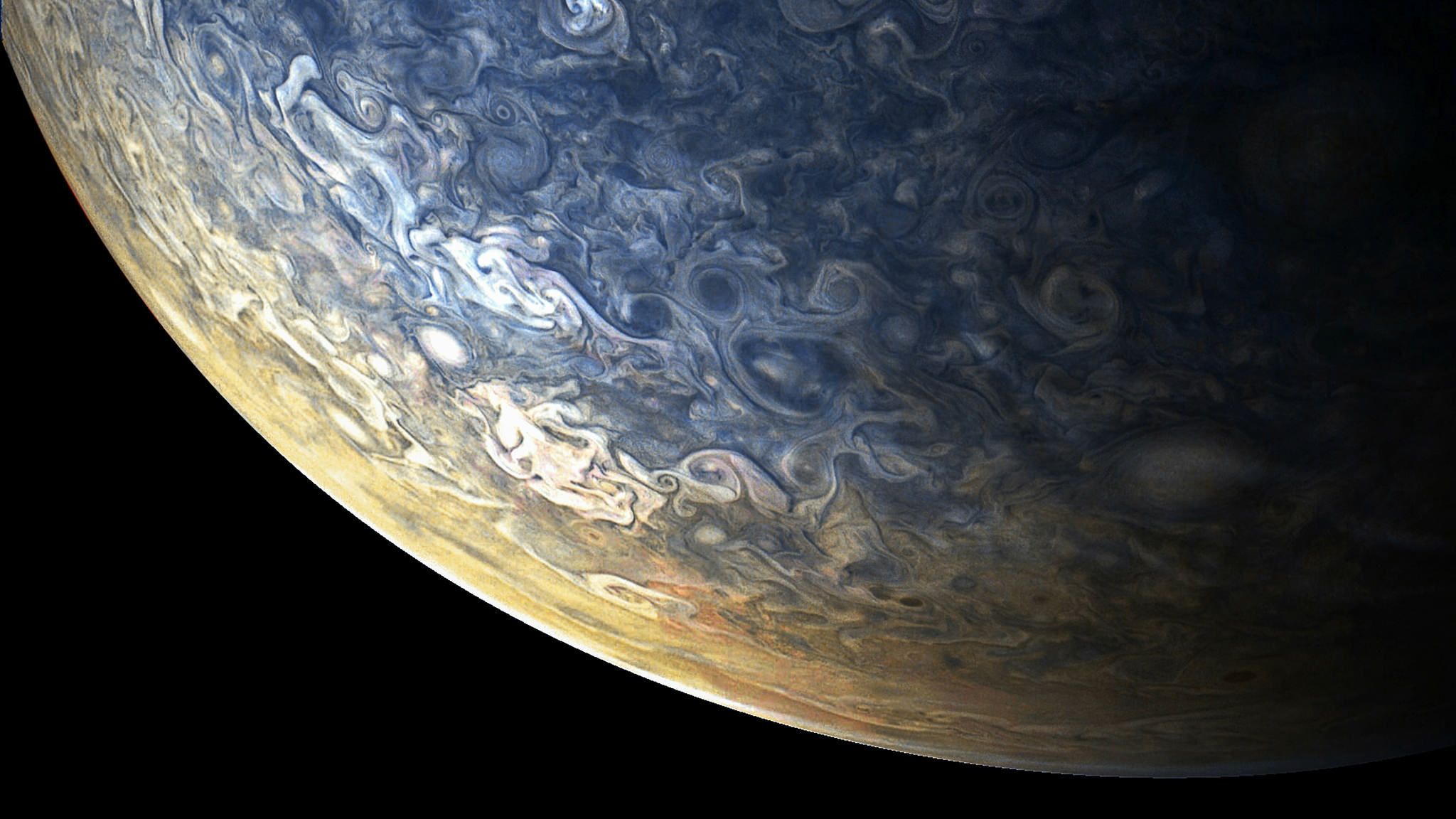
Deep inside the atmosphere, the scientists found evidence for what they called an “equatorial plume” – a massive and unexpected overturning of gas driven by a steady upward stream of ammonia from around the planet’s equator. The storms reached up to 1,400km wide, more than ten times the size of the largest cyclones on Earth. Time-lapse images revealed them to be enormous cyclones, rotating counter-clockwise in the northern hemisphere. Its sensors peering down as it swooped around the planet, Juno spotted chaotic scenes with bright oval-shaped features swirling in the clouds. Writing in two papers in the journal Science today, the Juno team describe fresh images and measurements of the planet’s atmosphere, magnetic field and the brilliant non-stop lightshows that constitute the aurorae at Jupiter’s poles.Īn image of the North polar region of Jupiter.

All of the other planets, the asteroids and comets, would fit within Jupiter, a planet 11 times wider than Earth. Compared with Jupiter and the sun, the rest of the solar system is an afterthought. It’s more variable, there are more features, there is much more detail the closer you look.”ĭescribed as a “planet on steroids” by Scott Bolton, the mission’s principal investigator at the Southwest Research Institute in San Antonio, Jupiter is an enormous gas giant made from hydrogen and helium. “What we thought we knew about Jupiter, we underestimated. Yet more images revealed flashes of lightning that illuminate the Jovian sky.

Some were so high, they stood out even on the nightside of the planet, betrayed by the feeble light of the sun glinting off them. The spacecraft survived an almost six-year, 2.8bn km voyage across the depths of space to reach its destination, where it ducked beneath Jupiter’s intense radiation belts, turned on its suite of instruments, and swept into an orbit that loops over the planet’s north and south poles.įrom 5,000km above the brown-orange blanket that covers the planet, Juno’s camera snapped pictures of tall, white storm clouds standing high above the rest. Photograph: Credits: NASA/SWRI/MSSS/Gerald Eichstädt/Seán Doran In just two hours, the spacecraft travels from a perch over Jupiter’s north pole through its closest approach (perijove), then passes over the south pole on its way back out. Once every 53 days the Juno spacecraft swings close to Jupiter, speeding over its clouds.


 0 kommentar(er)
0 kommentar(er)
